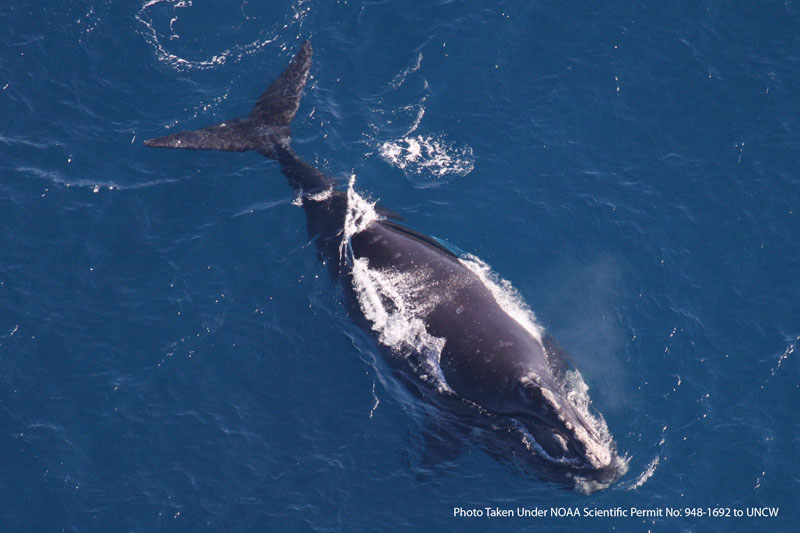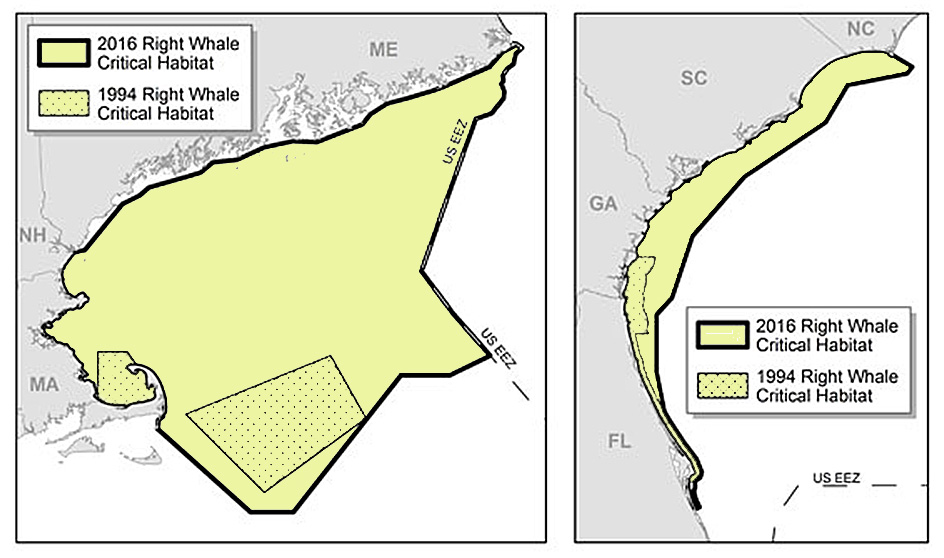Here’s what a right whale sounds like . . .
CHARLESTON, S.C. — The federal government is expanding its list of right whale habitat to include calving grounds off the Southeast coast and feeding grounds off New England, increasing the critical area by thousands of square nautical miles.
In all, almost 30,000 square nautical miles are now considered critical – more than six times the area originally designated more than two decades ago.
The North Atlantic right whale, hunted almost to extinction in the 1800s for its oil, is slowly recovering. There were about 300 in 1994, a number now estimated to be about 500.
“We have made progress,” said David Gouveia, the marine mammal and sea turtle conservation coordinator for the Greater Atlantic Region of the National Marine Fisheries Service. “We are on a positive trajectory but there is still plenty of work to be done.”
He said the whales have been helped by measures like speed restrictions on large vessels entering port and rules to prevent whales from being entangled in fishing gear. Expanding the critical habitat should also help, he said.
The new designations do not create refuges or restrictions that affect fishing. However, projects that require federal permits such as dredging or putting up wind farms will now be reviewed with an eye toward how they affect whale habitat.
Gouveia said oil platforms, if eventually permitted off the Carolinas coast, will likely be well out at sea beyond the critical habitat area for whale calving.
The designations are based years of aircraft and ship surveys of right whales and their habits.
“With two decades of new information and improved understanding since we first designated critical habitat for the species, we believe the expansion will further protect essential forging and calving areas,” said Eileen Sobeck, assistant administrator for National Oceanic and Atmospheric Administration Fisheries.
In the Southeast, calving habitat that had been designated along Florida to midway up the Georgia coast has been extended northeast to off Wilmington, North Carolina. The area runs from the coast to about 30 miles offshore.
Gouveia said the whales prefer to give birth in an environment with the right combination of water depth, sea temperatures and a relatively calm ocean surface.
Off New England more than 18,000 nautical square miles of critical habitat for feeding have been added. The area now includes the entire Gulf of Maine to southeast of Cape Cod.
Research has shown a wider abundance in the region of small crustaceans called copepods that float in the water column and that are eaten by the whales.
The Center for Biological Diversity, an Arizona-based nonprofit, lauded the government’s move but said more needs to be done. The center and other environmental groups had petitioned for increased habitat protection for the whales.
Send questions/comments to the editors.




Comments are no longer available on this story